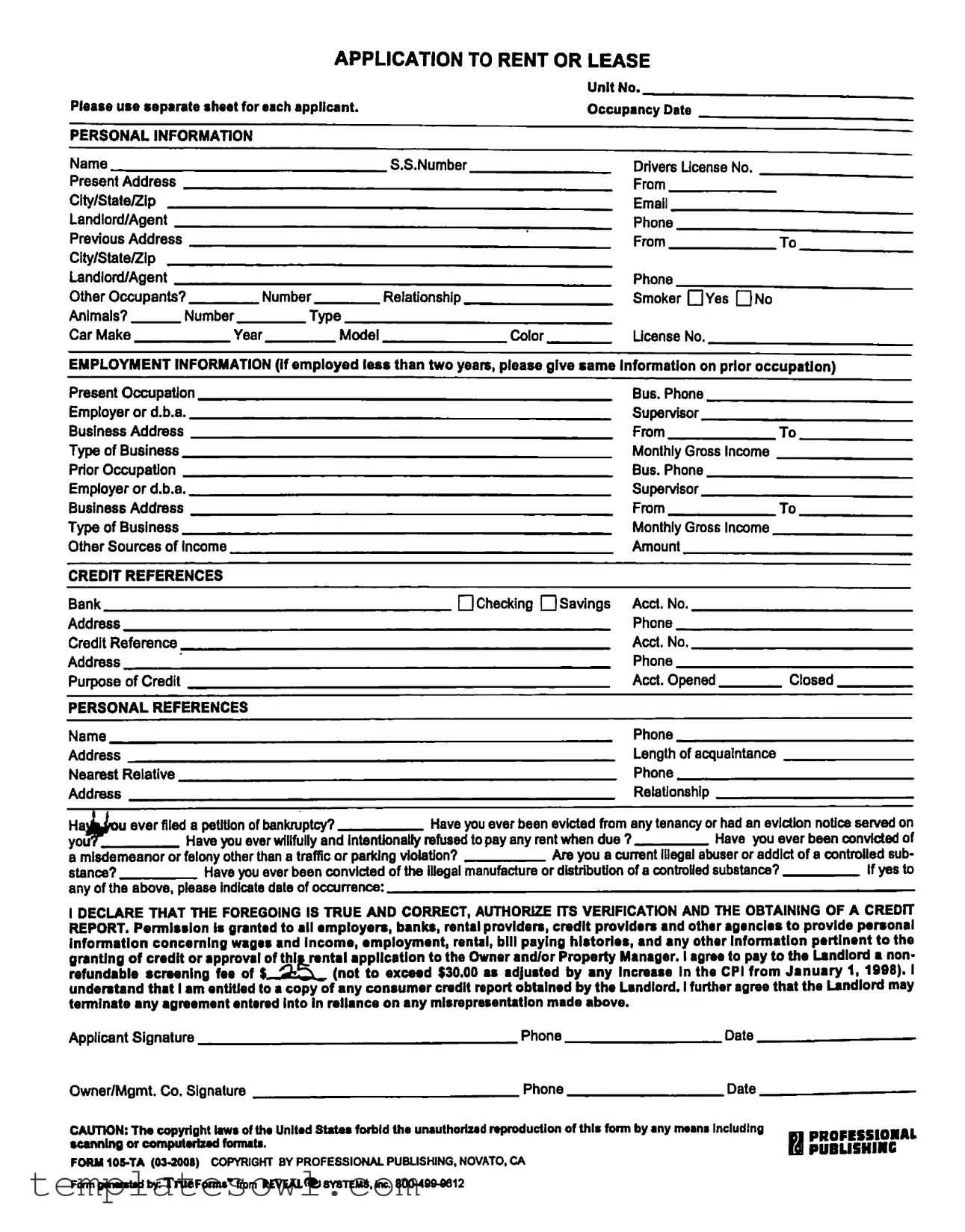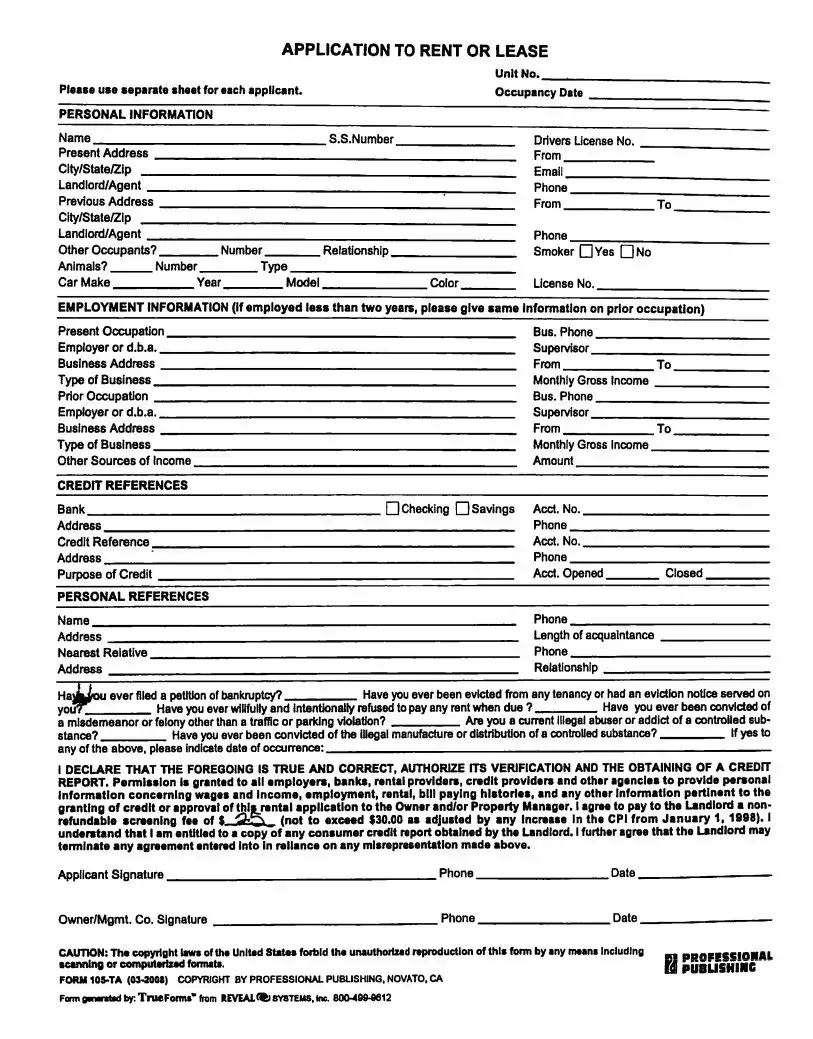What is the Professional Publishing 105 Ta form used for?
The Professional Publishing 105 Ta form is designed for individuals applying to rent or lease a residential unit. This form collects essential information from the applicant, including personal details, employment history, and credit references. It assists landlords and property managers in assessing the eligibility of applicants for tenancy.
What information do I need to provide on the form?
Applicants must provide their personal information, including name, address, and contact details. Employment information is needed, such as current occupation and employer details. Additionally, applicants should list credit and personal references, include any prior eviction history, and disclose any criminal convictions if applicable. This comprehensive data helps a landlord evaluate the potential tenant's reliability.
Do I need to provide a background check authorization?
Yes, by signing the form, you authorize the landlord to verify the information provided. This includes obtaining credit reports and contacting your employers or rental references to confirm your rental history and financial stability.
What is the non-refundable screening fee mentioned in the form?
The non-refundable screening fee, which does not exceed $30, is paid to cover the costs associated with processing your rental application. This fee may be adjusted based on the Consumer Price Index (CPI) changes. It is important to note that this fee is non-refundable regardless of whether your application is approved or denied.
Am I entitled to receive a copy of the credit report?
Yes, you are entitled to receive a copy of any consumer credit report that the landlord obtains as part of the screening process. This is your right under the Fair Credit Reporting Act, allowing you to review any information that may affect your application.
What happens if I provide false information on the application?
If any misrepresentations are found in your application, the landlord has the right to terminate any rental agreement made based on the incorrect information. It is crucial to provide truthful and accurate data to avoid any issues with your application or potential rental agreement.
Is it necessary to complete the entire form?
Yes, it is imperative to complete all applicable sections of the form. If any sections are left blank or unanswered, the landlord may consider your application incomplete, potentially delaying or denying your rental request. Each part of the form is designed to give the landlord a full picture of your rental qualifications.

